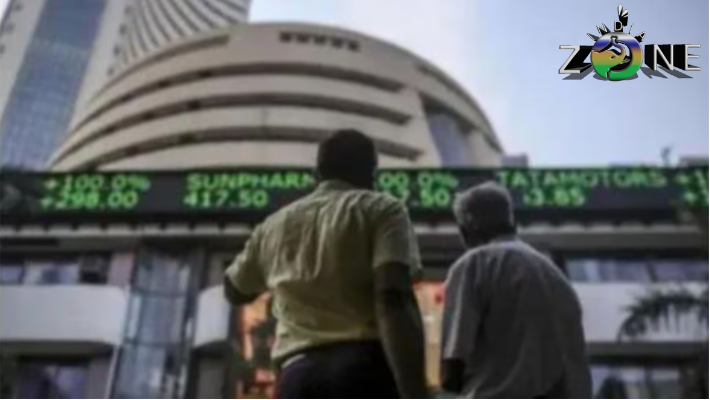
The key equity indices, the BSE Sensex and NSE Nifty, finished their sessions on a positive note on the last trading day of the 2023–24 fiscal year, exhibiting an optimistic attitude that attracted the attention of the market. This growing trend was greatly impacted by strong purchasing in important industries including banking, power, and automobiles. A positive attitude in the global market arena had a knock-on effect for these industries, suggesting a coordinated confidence among investors around the globe.
The 30-share BSE Sensex had a significant increase, closing at 73,651.35, up 655.04 points, or 0.90 percent. The index reached a peak of 1,194 points, or 1.63 percent, at 74,190.31 during intraday trade, demonstrating an even greater degree of momentum. The NSE Nifty did the same, closing the day at 22,326.90 after increasing 203.25 points, or 0.92 percent. This outstanding result reflects the high level of investor confidence and the general upbeat mood that permeates the market.
When considering the entire fiscal year 2023–2024—these benchmark indices demonstrated nothing short of extraordinary success. The Nifty rose even more dramatically, rising 4,967.15 points, or 28.61 percent, while the BSE Sensex made a massive jump, rising 14,659.83 points, or 24.85 percent. This significant increase over the course of the fiscal year highlights the tenacity and vibrancy of the Indian stock market, which has been supported by both positive international market conditions and domestic economic recovery initiatives.
The optimistic trend observed in the Indian equities market is consistent with the overall global economic outlook, indicating a growing level of investor confidence on the possibilities for development and stability in the economy. The significant increases in the Sensex and Nifty over the course of the year are indicative of a healthy investment environment, which is fueled by tactical purchases in industries that are essential to the Indian economy. The performance of these indexes as the fiscal year 2023–24 draws to an end not only emphasizes the accomplishments of the previous year but also sets a favorable tone for the upcoming financial year, indicating possibilities for ongoing market expansion and prosperity.
Mumbai saw a historic conclusion to the fiscal year 2023–2024 on March 28, 2024, when the major equity indices, the BSE Sensex and NSE Nifty, spiked due to strong buying in several important sectors, indicating a period of optimistic optimism in the Indian stock market. A positive trend in global markets combined with investor optimism in power, automotive, and financial companies drove the Sensex and Nifty’s outstanding performance on the final trading day. This upward trend was consistent with investors’ general optimism about the outlook for the economy, both domestically and globally.
The benchmark BSE Sensex, which measures 30 major shares, rose sharply, rising 655.04 points, or 0.90 percent, to close at 73,651.35. This increase was a component of a larger trend that was seen throughout the day, as the index rose 1.63 percent to a high of 74,190.31. In a similar vein, the 50-share NSE Nifty gained 203.25 points, or 0.92 percent, to close at 22,326.90. The active and resilient nature of the Indian equities market is reflected in the outstanding year-long performance of these indices, with the Sensex climbing 24.85 percent and the Nifty jumping 28.61 percent, respectively.
Bajaj Finserv and Bajaj Finance were two of the Sensex basket’s best performers, with increases of around 4% and 3%, respectively. This increase was partially ascribed to rumors that a subsidiary, Bajaj Housing Finance, was thinking about doing an IPO. These results underscore the impact of market speculation and business activities on stock prices, highlighting the interdependence between news media and financial markets.
Prominent companies like Nestle, State Bank of India, Power Grid, Tata Steel, Larsen & Toubro, and Mahindra & Mahindra were among the other big winners, demonstrating the variety of industries boosting the market. On the other hand, downturns were experienced by Tech Mahindra, Axis Bank, and Reliance Industries, demonstrating the market’s innate volatility and the range of variables that can affect stock performance.
The end of the financial year highlights the potential and vigor of the Indian stock market, which has seen notable increases in a number of different industries. The fluctuation of equities such as Bajaj Finserv and Bajaj Finance, in conjunction with both local and international economic patterns, highlights the intricacy and vitality of the equity markets. The performance of the Sensex and Nifty provides firms and investors with vital insights into the larger trends influencing financial markets in India and abroad as they navigate the always changing economic landscape.










